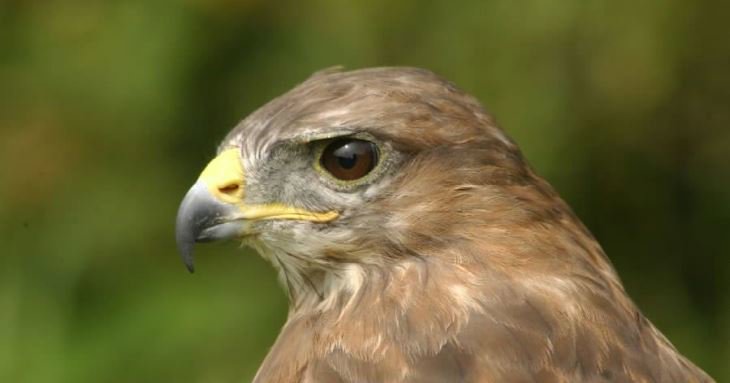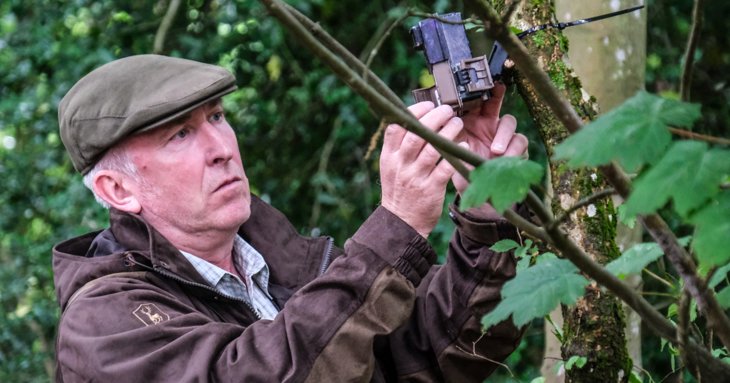One of Gloucestershire's leading outdoor attractions, Westonbirt Arboretum attracts 500,000 visitors to its magical tree garden each year, with five national collections and over 2,500 botanical species to discover.
But it's not only home to trees: Westonbirt is a hive of British wildlife, attracting thousands of native flora, fungi and animal life. SoGlos speaks to the arboretum's first dedicated wildlife and conservation ranger, Ross Martin, about the diverse habitat and creatures found at the Cotswold arboretum — and how they're being protected.
What does a typical day in the life of a ranger at Westonbirt Arboretum look like?
There isn’t a typical day in the life of a wildlife and conservation ranger at Westonbirt, and that’s what makes my role so rewarding.
The seasons normally dictate what I get up to. Now that spring has arrived, the arboretum is in full bloom and the landscape and wildlife is changing each day.
My role is a first for the arboretum, so a large part of every day is spent observing and recording the wildlife living here. I'm developing the first detailed records of our wildlife and working on a conservation plan to help protect and manage the wildlife species that make Westonbirt their home.
What methods and technologies do you use to monitor wildlife?
Along with daily walks through the arboretum to observe our wildlife, I have also been using wildlife cameras to record the wonderful variety of species living here at Westonbirt.
I'm always on the lookout for anything unusual and if I do find something interesting, such as a new badger set or bird nest, I will record that as a conservation location of interest and complete data reports. By doing this, we will build a more detailed picture about the wildlife here.

What kind of species can be found at the arboretum and how do you preserve their habitats?
We have an enormous amount of flora, fauna and fungi. We have over 1,400 species of fungi recorded on-site. The last bat survey carried out in the arboretum also identified that Westonbirt is home to nine of the 18 bat species found in the UK.
The goshawk, known as ‘the phantom of the forest’, is one of my favourite birds. I have captured footage of these magnificent creatures on my wildlife cameras in the areas of ancient woodland within Westonbirt.
We have an array of excellent diverse and special habitat that supports a wide range of wildlife. We have a carefully considered plan for cutting grass and shrubs at different times of the year, which ensures that we have a range of habitat for beneficial pollinators such as bees and butterflies. In areas of the arboretum where it's safe to do, we also leave fallen trees and branches, which may have fallen due to high winds or tree maintenance work, to become home to flora, fauna and fungi.
A major part of my role is managing the threat of invasive species such as muntjac deer and grey squirrels, both of which are damaging to UK woodlands and the arboretum as they feed on trees and vegetation. In line with standard woodland management practices, this does mean that our team needs to control certain pest mammals, so this is part of my work. Controlling certain wildlife to protect against the threats of nature is part of a bigger plan to sustain a vital haven at the arboretum; and brings conservation, biodiversity and protecting the future of trees and wildlife together.
Our website also provides information about the wildlife thriving here. Take a look at forestryengland.uk/westonbirt/wildlife.

Are there any species you would like to attract, and how will you encourage them to take up residence at the arboretum?
I have just started an exciting conservation project to see if we can attract pine martens to Westonbirt. I invited the pine marten project manager at the Gloucestershire Wildlife Trust to Westonbirt to find out if they thought pine martens could live here. I learned that there have been confirmed sightings of pine martens in the Stroud Valley, which could be a result of pine marten reintroduction to the Forest of Dean between 2019 and 2021.
Since that meeting, I have been enthusiastically monitoring Westonbirt for pine marten activity and started with a six-week observation that involved setting up some ‘attraction points’, where I put out supplementary food known to attract pine martens, such as pilchards, strawberry jam and hen’s eggs.
I placed the food in a tree, in an area of our woodland considered more attractive to pine martens and set up a wildlife camera that I could check each week. I am also regularly on the lookout for pine marten skats on the gravel paths that cross the arboretum and on raised ground or fallen trees that might carry pine marten scent.
Unfortunately, no pine martens have been captured on our cameras yet; however lots of other wonderful wildlife such as deer, stoats, foxes, badgers, owls and goshawks were seen on the footage.
This spring, I have put up some specially designed pine marten den boxes in a few trees, located in the quieter areas of the arboretum. The den boxes are being used as a monitoring tool and a temporary substitute for natural den and rest sites. It is my hope that pine martens will use the boxes to raise young in spring and summer, shelter from bad weather, rest during the day and stay safe from predators such as foxes.

How do you educate visitors about the importance of wildlife conservation and their role in helping to protect the natural habitats within the arboretum?
Thanks to support from the Friends of Westonbirt Arboretum, a charity working in partnership with Forestry England to connect people to trees in the arboretum, there are many ways we can educate our visitors about the importance of wildlife.
These include the seasonal trails and interpretations we install, designed to highlight and explain certain wildlife you can see or hear as you explore the arboretum throughout the year.
Most weeks, we host educational visits, from schools, colleges and youth groups and the activity sessions always include wildlife as part of the learning focus.
We also run family activity days throughout the year, designed to encourage children to learn about our nature and wildlife through arts and crafts activities.
What are your future plans for the wildlife at Westonbirt?
I plan to invite experts from special interest groups working with species such as bats, great crested newts and hazel dormouse, to observe, report and record findings here at Westonbirt.
I’m particularly interested in a reintroduction programme for the hazel dormouse. There is a hazel coppice area here that is the ideal habitat for them, with plenty of fruit and nut bearing trees and bushes, lots of honeysuckle and a connecting canopy of large oak trees — so it’s quite possible that dormice are already living here.

What is your favourite season at Westonbirt Arboretum and why?
For me, springtime is my favourite time of year. As spring arrives, the arboretum is alive with new sights, sounds and smells, such as the magnolia and blossom trees, wild birds and their fledglings, and many newborn wildlife that I love seeing — and the arrival of warmer, sunnier days.









.png?width=432&height=227&rmode=pad&bgcolor=ffffff&quality=85)








